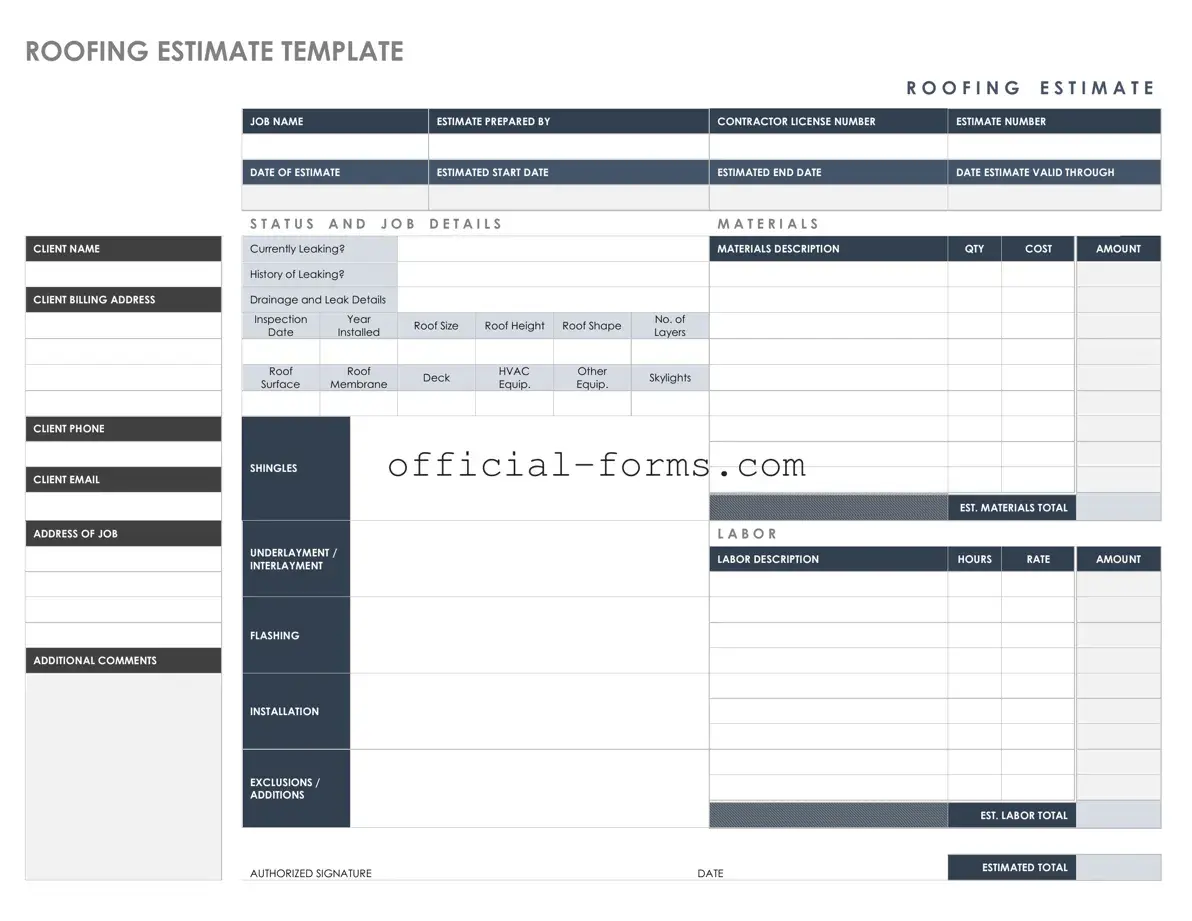Filling out a roofing estimate form can seem straightforward, but many individuals make common mistakes that can lead to delays or inaccurate quotes. One frequent error is providing incomplete information. If key details about the roof's size, type, or condition are missing, it can result in an estimate that does not reflect the actual needs of the project.
Another mistake is failing to specify the type of roofing material desired. Different materials come with varying costs and installation processes. Without this specification, contractors may provide estimates based on standard materials, which may not align with the homeowner’s preferences.
Many people also overlook the importance of including the roof's age and any previous repairs. This information is crucial for contractors to assess the roof's current condition accurately. Not mentioning past issues can lead to underestimating the work required.
Another common error is neglecting to mention any specific features of the roof, such as skylights, chimneys, or vents. These features can significantly affect the complexity of the job and the overall cost. If they are not noted, the estimate may be lower than what is realistically needed.
Inaccurate measurements are a frequent problem as well. Some individuals may estimate the size of their roof rather than measuring it accurately. This can lead to significant discrepancies in the materials needed and the total cost of the project.
Additionally, failing to mention the desired timeline for the project can create complications. Contractors need to know when the work is expected to start and finish to allocate resources effectively. Without this information, scheduling conflicts may arise.
Some people forget to include their contact information correctly. Providing incorrect or incomplete contact details can delay communication and lead to frustration on both sides. It is essential to ensure that all contact information is accurate and up-to-date.
Another mistake is not asking for clarification on the estimate process. Some homeowners may not understand how estimates are calculated or what factors influence pricing. Not seeking clarification can lead to misunderstandings later on.
Lastly, individuals often neglect to read the fine print. Important details about warranties, payment terms, and project timelines may be buried in the terms and conditions. Failing to review these aspects can result in unexpected surprises during or after the project.
By avoiding these common mistakes, homeowners can ensure a smoother process when obtaining roofing estimates. Clear communication and thoroughness can lead to more accurate quotes and a better overall experience.
